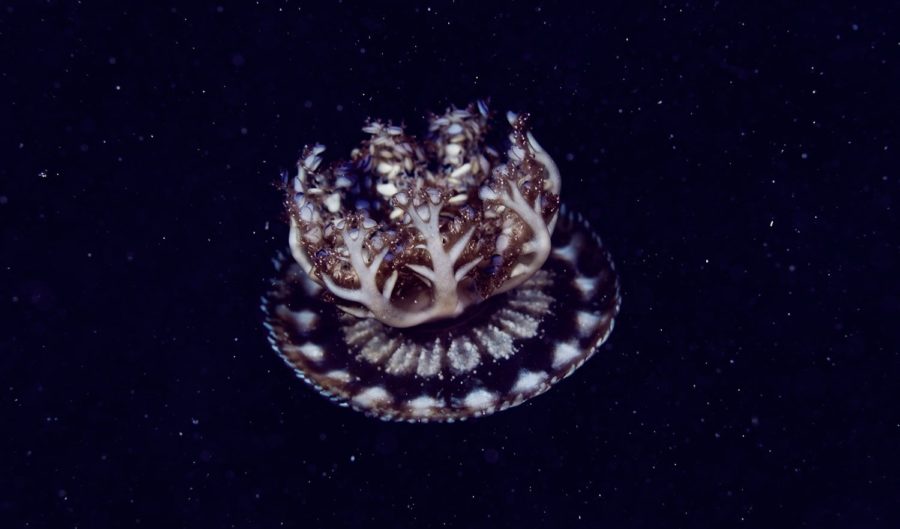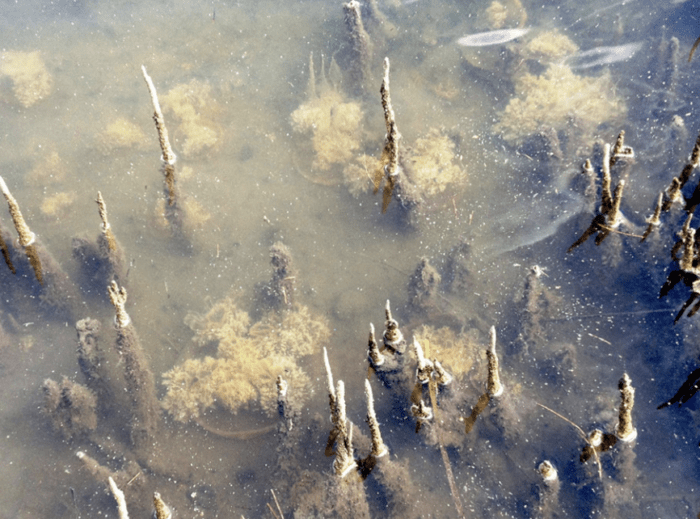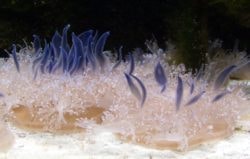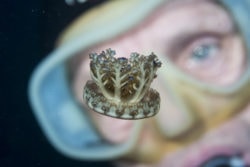This upside-down jellyfish lives life a little differently

Bec Crew
Bec Crew

Nature loves a curve-ball, and have we got a great one for you. Meet the upside-down jellyfish (Cassiopea andromeda), a one-of-a-kind creature that prefers to float arms-up, with its bell resting on the sea floor.
Found in sand or mud flats, seagrass beds, shallow lagoons, and around mangroves, the upside-down jellyfish is very particular about its living space.
It’s spread across the globe, including in the Indian and Pacific Oceans, as well as in the Mediterranean Sea. There have even been a handful of sightings in Australian waters, mainly up in the north, but more recently off the coast of Western Australia and in Wallis Lake and Lake Illawarra in coastal NSW.
Here they are, doing their thing in the soupy, shallow waters of Wallis Lake:

(Image credit: Stephen J. Keable and Shane T.Ahyong)
Upside-down jellyfish can grow to about 30 cm wide, and can sting you if you’re unlucky enough to step on one.
The species uses its venom to paralyse prey that swims into the vicinity of its arms, but when larger food sources aren’t around, it will pulsate its bell to push seawater through its arms so it can collect a meal of microscopic zooplankton instead.
Of course, regular jellyfish get by perfectly well without floating upside-down, so why does C. andromeda have to be so different?
Well, the easy answer would be camouflage, because they really do look like a mob of sea anemones when they’ve got their frilly bits pointed sky-high:

(Image credit: Raimond Spekking/Wikimedia)
But the answer is actually a whole lot more complicated than that.
By flipping themselves upside-down, these jellies get maximum sunlight on their arms, which allows them to host photosynthetic dinoflagellate algae.
The algae get to accumulate on the jellies’ arms, growing in the sunlight in a relatively safe environment, while the jellies are rewarded with an endless supply of nutrients. Win, win.
The upside-down jellyfish also plays host to little prawns that live nearby, because its arms offer them a protective shelter, and in return, the prawns clear it of parasites.
So, this strange jelly, named after TWO heavyweights in Greek mythology, is a friend to prawns and algae, and looks very cute doing it:

(Image credit: prilfish/Flickr)
Here’s a bunch of upside-down jellies, pulsating vigorously, ready for a meal:

